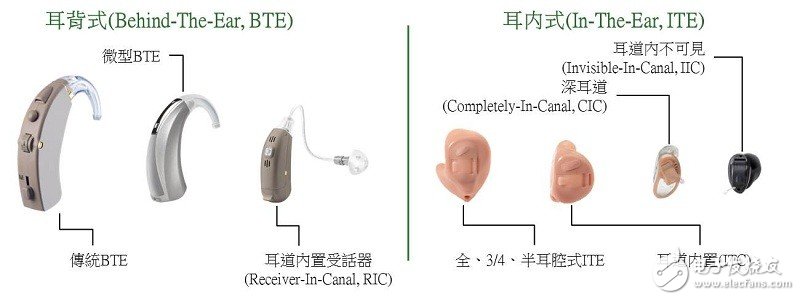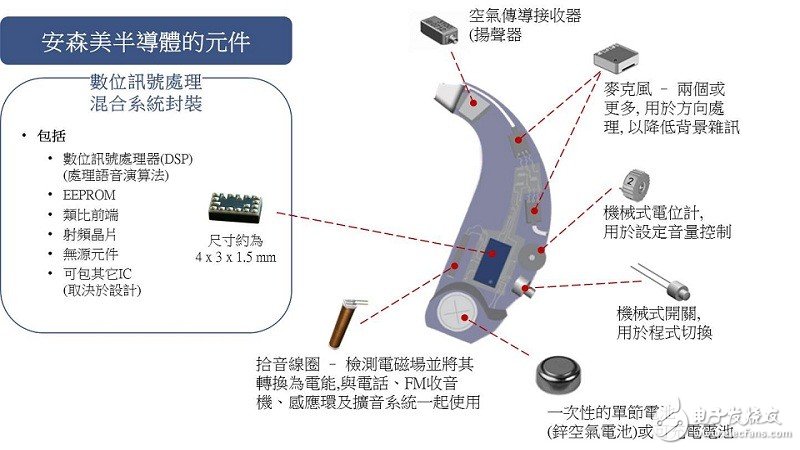China's population aging process is continuing to accelerate: According to the UN's 2010 World Population Outlook, the percentage of China's population over 60 years old in 2010 was 12.3%, and it is expected to increase to 24.4% by 2030 and even reach 33.9 by 2050. %. At the same time, with the improvement of people's living standards, life expectancy is getting longer and longer, and more attention will be paid to medical care and health care. Outpatient and home health care will become more and more common. Moreover, the aging of the population may lead to higher rates of heart disease, diabetes, asthma, and the Chinese government plans to achieve universal health insurance, China's medical equipment industry will continue to develop.
At present, China's medical equipment market is scattered, and only a few large medical equipment companies such as Mindray, Jin Kewei, Omron and so on, the market potential is great, many small companies are also targeting this market, vying to develop innovative medical solutions. Therefore, the development trend of medical equipment includes the addition of "smart" and data storage functions, portability, wireless/connected solutions, human body area networks, and the like. Medical semiconductors undoubtedly play a leading role in the innovation of medical equipment and solutions, towards higher integration, miniaturization, and high-performance development, while shifting consumer medical equipment to standard components and embedding wireless functions.
ON Semiconductor introduces 矽 into life
ON Semiconductor's high-performance solutions help medical technology developers solve their unique design challenges. As an active member of the Health Alliance, ON Semiconductor's highly skilled system architects, design, packaging and test engineers have a rich intellectual property (IP) lineup with world-class facilities and over 30 years of customized experience. Comprehensive product lineup and services, including: custom mixed-signal ASICs, ASSPs, medical discrete components, hearing aid digital signal processing (DSP) systems, custom and semi-customized Ultra-low-power memory, advanced packaging for system miniaturization, additional foundry services, etc., its development kits, software packages, product libraries, etc. guarantee a fully qualified and stable development process, product life support for extended product life cycle, data It can be tracked and saved, the quality is certified by ISO 13485 medical system, and the fault analysis laboratory is set up, which can be batch acceptance test.
ON Semiconductor's key healthcare segments include implants, hearing health and clinical and designated devices.
Implant
Implant applications primarily include defibrillators and cardiac pacemakers, neurostimulators, injectable monitors, and respirable electronic devices. ON Semiconductor provides ASICs, memory, discrete components, modules and foundry services for such applications.
Using an implantable neurostimulation platform, ON Semiconductor offers a single-chip solution that integrates controller, memory, digital, analog, and high voltage, and uses a multi-channel surge suppressor (TSS) to further significantly reduce the number of discrete components (usually IC Reduce the number of dies from 3-4 to 1-2), help reduce the space occupied by the board, simplify equipment manufacturing and logistics, reduce cost and power consumption, reduce dependence on systems and boards, and improve quality. Speed ​​up time to market and reduce development risks.

â–² ON Semiconductor's single-chip solution for implantable neurostimulation platforms.
ON Semiconductor offers standard discrete components such as diodes, MOSFETs, IGBTs, and power regulators for medical applications, and offers a customizable choice for the medical market.

â–² The customizable options offered by ON Semiconductor.
ON Semiconductor offers custom ASSPs based on the unique needs of medical applications, such as multi-channel transient surge suppressors tailored to unique physical requirements and electronic parameters, with extremely fast conduction and maximum inrush current greater than 12A. Features; and provide SRAM, EEPROM and SRAM-Flash with low pin count, ultra low leakage current, storage capacity up to 8 Mb, ultra low power consumption.
To achieve lower cost and higher performance requirements, ON Semiconductor also offers serial SRAM memory instead of EEPROM, FRAM and standard SRAM. Parallel SRAM typically requires 3 control inputs, 15 address inputs, and 8 data I/Os for a total of 26 lines for low-power applications only. Serial SRAM requires only a total of 4 lines, and has a smaller footprint, fewer pins, and lower power consumption. It can save an average of 10 years of backup data and lower system cost, making it ideal for cardiac monitoring equipment. Small size application.
In particular, to meet specific requirements of the FDA III, ON Semiconductor offers medical grade standard components for implant or life-critical applications and provides MIL-STD-750 compliant MIL-STD-1950-compliant assays. High-reliability process that supports JAN / JANHC quality standards and military standard protocol models such as production line manufacturing approved by the Defense Logistics Agency (DLA).
Hearing aid
Hearing aids are mainly classified into Behind-The-Ear (BTE) and In-The-Ear (ITE) depending on the wearing position. The former includes traditional BTE, micro BTE and Receiver-In-Canal (RIC), the latter including full, 3/4, half-ear cavity ITE, ear canal (ITC), deep ear canal (Completely- In-Canal, CIC) and Invisible-In- Canal (IIC).

â–² Overview of the main types of hearing aids.
Micro and "invisible" are a major trend for hearing aids, and the smaller RIC and new IIC types are more popular, requiring semiconductor manufacturers to move to 65 nm or smaller nodes and miniaturized packaging technology; hearing aids The second trend is to add wireless communication and connectivity. Currently using 2.4 GHz, 900 MHz and Near Field Magnetic Induction (NFMI) technology with Bluetooth relay components, interoperability and advanced packaging technology are required. Third, hearing aids will develop. To be more "smart" and fully automated; such as volume control and signal processing automatically adapt to the sound environment, making users more comfortable, which requires more sophisticated power processing and algorithms. The development of hearing aids creates design challenges in terms of power consumption, size, and mixed-signal processing, such as requiring less than 1 mA of current consumption at 1 V operating voltage, multi-chip and chip area less than 10 mm2, digital and analog functions.

â–² Showcase the composition of a typical hearing aid and the components that ON Semiconductor can provide.
ON Semiconductor offers a complete line of DSP systems, including pre-fitted RHYTHMTM series, pre-configured RHYTHM? And AYRE series, and Ezairo? series. In addition to a comprehensive hearing aid system including DSP, ADC, DAC, NVM, these series also offer different configurations for different target designers to meet their different needs: Ezairo? A family of programmable IDEs for technologists with differentiated algorithms; the pre-configured series provides preloaded algorithms, supporting infrastructure tools (SoundDesigner, ARK) and reference designs for older customers and those with intermediate audiology knowledge; The pre-fit series offers preloaded algorithms, companion manuals, and upcoming reference designs to help solve new design challenges for new hearing aid manufacturers and analog hearing aid manufacturers.
With more than 40 years of experience in addressing space-constrained requirements for hearing aid manufacturers, ON Semiconductor has adopted advanced 2.5D and 3D ultra-small system-in-package (SiP), which means different chips and discretes in the same package. The components are connected together to save space and improve electrical performance by reducing the signal distance. SiP is a custom package development and manufacturing service designed for medical applications that focus on size, performance and system integration.
ON Semiconductor will introduce a new SiP-integrated 2.4 GHz wireless module with a size of only 7.39 & TImes; 3.94 & TImes; 1.4 mm, with key features including: integrated fully programmable multi-core audio processor, adapters The linear interface is connected to any audio source (TV, HiFi) to provide the sound flow of the remote microphone adapter, control using the phone's standard profiles such as “Find Meâ€, “telephone alert profileâ€, volume and program via mobile phone Control changes, etc.
Deluxe Rice Cooker was one of electric type rice cooker , but it`s the most popular type of electric rice cooker . especially famous in Southeast Asia area with its good appearances with various functions. Not only its outer shell could be customized with different demands, but also it speeding cooking , saving times and electricity, enhancing our lifestyle
Features
The inner pot is made of solid and durable aluminum alloy of high intensity , such as non-stick inner pot , stainless steel inner pot and honeycomb patterned inner pot with non-stick coating.
There are some models that use stainless steel instead of aluminium .Various other materials, such as copper, pure carbon, ceramic, and diamond powder coating, may be used for higher heat conductivity or better taste.
Applications
Multifunction , can cooking rice, soup and much more. added cooking versatility with supplied steam tray.
Some rice cookers have settings for congee, a type of rice porridge called okayu in Japanese, Juk in Korea, and zhou in Chinese.
More elaborate recipes are possible using a rice cooker, and there are cookbooks devoted entirely to dishes prepared using a rice cooker. It is possible to cook soups, stews or sponge cakes in electric rice cookers. By simply adding ingredients and setting it to "warm", a rice cooker cooks the contents at about 65 °C (150 °F). In a few hours, the stew is fully cooked and ready to eat.
Deluxe Rice Cooker
Deluxe Rice Cooker,Cylinder Rice Cooker,Mini Rice Cooker,Stainless Steel Rice Cooker
Guangzhou Taipeng Electrical Appliances Technology CO., LTD. , https://www.taipengelectrics.com
